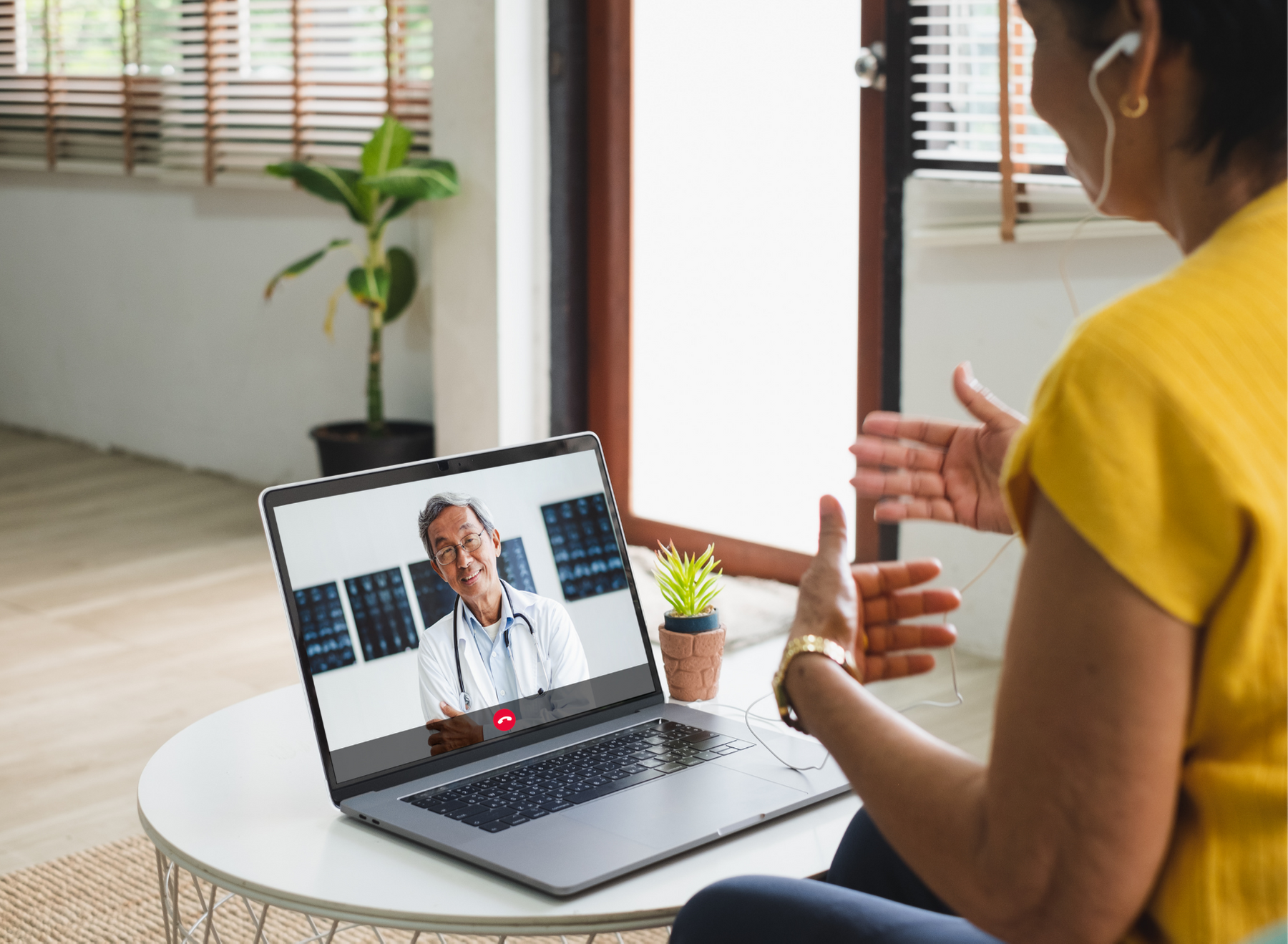Scaling Up Telepharmacy for the Future

Telepharmacy turns 20 this year. Two decades after it emerged as a way of preserving and expanding pharmacy access across rural North Dakota, telepharmacy innovators are moving into sterile compounding, secure medication storage, primary care consults, and more.
Telepharmacy has gone from a pilot project to accepted practice in 25 states, according to Jessica Adams, PharmD, director of regulatory affairs for Telepharm, an early telepharmacy provider acquired by Cardinal Health in 2016. Many states who do not have telepharmacy rules in place today, are in some stage of approving telepharmacy as pharmacists and patients continue to push the need for access to pharmacy care. As pharmacists, providers, patients, payers, and regulators recognize the benefits that telehealth can bring to pharmacy, technology-based services will continue to expand.
At its simplest, telepharmacy allows a pharmacist to supervise a remote dispensing site via HIPAA-compliant, 2-way audio-visual technology. The pharmacist remotely supervises the telepharmacy technicians, verifies prescriptions, and counsels patients from their host pharmacy location. Newer iterations are combining remote oversight with other familiar technologies to expand the reach of pharmacy care.
Remote Sterile Compounding
One of the newest expansions is using remote verification for sterile IV compounding at the University of North Carolina (UNC). Pharmacists saw the potential to balance workload across multiple pharmacies that were using BD Pyxis IV Prep to prepare sterile IV solutions, explained Lindsey B. Amerine, PharmD, MS, BCPS, director of pharmacy and associate professor of clinical education at the UNC Eshelman School of Pharmacy in Chapel Hill, North Carolina. She proposed a double arm, prospective study of remote versus onsite verification at 4 UNC pharmacies.
The Pyxis system uses gravimetric-based technology to weigh and verify compounded products, Amerine explained. The system images the compounding process, which is typically managed by a technician and reviewed by a local pharmacist. Because the onsite pharmacist was using images generated by the system, there was no obvious difference between reviewing images in the next room or 25 miles away.
Results of the 90-day trial demonstrated no difference in accuracy or safety for remote versus local oversight, and resulted in an annualized cost savings of nearly $24,800, according to Amerine. “When we did the study, the state had no rules around this kind of telepharmacy,” Amerine said, “so we designed the trial with remote plus onsite review of all compounded sterile products.” When the COVID-19 pandemic started, “we received a waiver from the [State] Board of Pharmacy to be able to do this remote sterile product check as long as the health emergency lasts,” she said.
“Our next initiative is to be able to use telepharmacy routinely in the long term to do more workload sharing across sites. There is also the advantage of having a pharmacist able to check product from anywhere in the hospital. Not being tied to the pharmacy frees you up to spend more time with patients.”
Secure Medication Storage
Roger Rose, RPh, director of pharmacy services for Wickenburg Community Hospital, opened the first telepharmacy in Arizona in 2019. Wickenburg has long had a satellite clinic in the town of Congress, which is about 16 miles away. With a population of 3500, Congress is too small to support an onsite pharmacist, Rose said. The drive to Wickenburg to fill prescriptions is not always practical for patients.
“We were doing deliveries to the Congress clinic twice a day, but that didn’t always work, either,” Rose said. “Patients still had to go home after their clinic visit, then come back later, or maybe the next day. Too many prescriptions never got picked up.”
When Arizona approved telepharmacy in 2018, Rose had a solution and 2 more problems. One was security. Most telepharmacy operations he visited had a single technician handling the entire operation.
“You’ve got your front end, you’ve got prescriptions at the back, and just 1 person,” Rose said. “For any pharmacist who has been around for a while, that’s a stress.”
The second problem was space. State telepharmacy regulations required at least 300 square feet. The only available space at the Congress clinic was 125 square feet.
His solution was RxSafe, a secure medication storage unit that can hold about 1300 medication vials. The unit weighs every container coming out and going back into storage to verify the medication removed for each prescription.
“Combining telepharmacy and RxSafe answered our questions,” Rose said. “We can stock just about everything our providers write in the limited space, and I know the location is safe for our tech. The technologies work well together.”
A Pharmacist in Every Room
Adam Chesler, PharmD, MBA, senior vice president for pharmacy integration at VillageMD, a network of primary care clinics, envisions a day when every patient in nearly 2000 primary care clinics can have a pharmacist consult. Some consults will likely come through an in-person Walgreens pharmacist. Walgreens is investing $1 billion to support up to 700 new Village Medical primary care clinics at its locations by 2025. Other consults will likely come via telepharmacy.
“Having a pharmacist directly involved in care improves patient outcomes,” said Chesler. “By integrating a pharmacist into primary care, we have shown significant, sustained increases in medication adherence to treat cholesterol, diabetes, and hypertension. We can utilize telepharmacy and telehealth technology by taking an iPad or tablet into any exam room and having a conversation between the pharmacist, physician, and patient anywhere, anytime.”
The telepharmacy technology already exists and VillageMD already has a focus on pharmacy integration. Patients with multiple chronic disease states or those who use multiple pharmacies have an elevated risk of therapy failure. These patients already receive in-person or telephonic pharmacy consults, as do discharged and homebound patients. Telepharmacy can further expand this reach. Pharmacists in these settings have full access to patient electronic medical records, a common communication platform with clinicians, and collaborative practice agreements with delegated prescribing authority.
“We are taking full financial risk for many Medicare patients,” Chesler explained. “The physicians here understand that the best way, the only way, to successfully improve outcomes and reduce costs is by having pharmacists directly integrated into the care team. Having a pharmacist on the care team is integral to our success and telepharmacy can help make that integration happen.”
Smoothing Regulatory Bumps
As telepharmacy evolves, regulators are playing catch-up. On a federal level, the COVID-19 pandemic called for loosened telehealth restrictions overall during the public health emergency. The Centers for Medicare and Medicaid Services (CMS) expanded the number of covered services that can be provided via telehealth. Many of these changes are noted as temporary during the COVID-19 emergency period. However, as telehealth benefits prove valuable, it is the hope that these changes will carry over post pandemic, enabling telepharmacy expansion.
Many states already had telepharmacy laws in place prior to the pandemic. California’s Legislature authorized telepharmacy in 2018. It took 2 years to work out the regulatory details and open the state’s first telepharmacy. Arizona’s first telepharmacy was 6 years in the making.
“When we first asked, the state pharmacy board told us they had no regulations and nothing in the practice act that would let them authorize telepharmacy for the hospital’s remote clinic,” said Rose. “Five years later, they had changes to the practice act, called us back for a hearing in July, and we were licensed the next April.”
Outreach to the state board, showing up at board meetings, and providing public comments make the difference, said Adams. “ Each state is unique and has its own challenges, but access is an issue everywhere. Telepharmacy has been proven to work for 20 years, and is now permitted in 25 states. If pharmacists attend board of pharmacy meetings and explain how telepharmacy can reduce gaps in pharmacy care that their patients are experiencing, it can make a positive difference in getting telepharmacy moving,” she explained.
Changing pharmacy regulation and legislation is a team sport, Adams continued. Arizona was slow to adopt telepharmacy in part because chain pharmacists feared remote oversight could lead to job losses. The Arizona Pharmacy Association demanded language in the practice act to safeguard pharmacist employment.
Rural health associations can be solid partners, particularly for pharmacists seeking to bring telepharmacy to underserved rural areas. Federally qualified health centers, health systems, and physician practices that recognize the advantages of bringing pharmacy to the care team can help build support.
“The basic message is telepharmacy safely provides greater access to pharmacist care,” Adams said. “Why are we not using a proven technology to help ensure that our patients are getting the best pharmacy care possible? The more stakeholders you bring to support your message, the more likely you are to get a positive response.”
